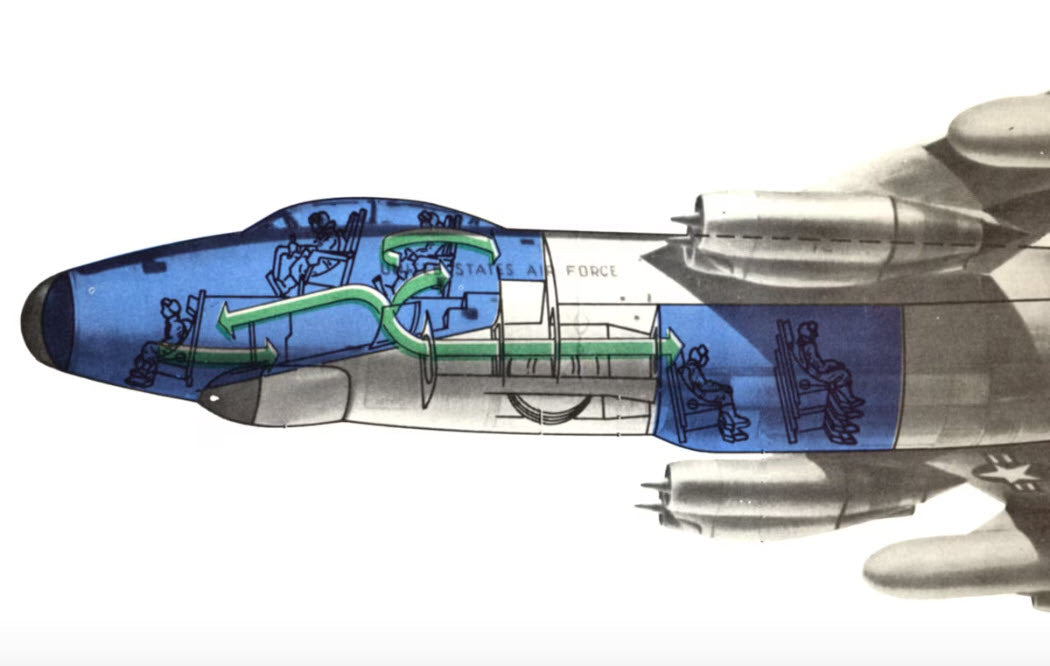Up, Up and Away
Who among us has not thought, if not dreamed, of becoming a pilot?
Those of us who did dream of flying can't help but turn our gaze skyward when we hear an airplane passing overhead.
What thoughts or dreams enter our heads as we watch the airplane fly off into the distance?
One such dreamer was Lawrence Richard Walters.

Lawrence Richard Walters
Early History
Lawrence Richard Walters, a/k/a Larry Walters, started dreaming of flying airplanes when he was just 13 years old.
He was determined to become a pilot, so in 1967 Larry joined the U.S. Air Force for the express reason of flying an airplane.
Unfortunately for Larry, the Air Force medical doctors discovered that his eyesight was simply too poor to become an Air Force pilot.
His destiny was to be a cook in Vietnam and not a pilot.
But, as any aspiring pilot knows, the desire to fly airplanes just doesn't go away.
As a student at Hollywood High School, Larry did a science project called "Helium and Balloons." He got a D on the project, but his interest in helium and balloons did not fade away.
After leaving the USAF, Larry became a truck driver for a company called FilmFair Studios, a television production company.
This employment was to become important later on.
Preparations
It's March 1982, and Larry decides he has waited long enough!
Larry especially enjoyed a lawn chair that he purchased from Sears-Roebuck that he found "exceptionally comfortable."
He loved to sit in it in his backyard and watch passenger jets pass overhead on warm summer evenings.
He really loved that lawn chair!
And, he just knew that he had to slip the surly bonds of the earth!
But how?
Then, Larry had an idea, and so he began to accumulate the equipment and supplies he would need to accomplish his goal.
To begin with, he decided he would use his favorite lawn chair. After all, it was quite sturdy, and he felt comfortable in it.
Then, he purchased some plastic, adhesive tape, paint, non-magnetic metal, copper alloy, nylon, paper, and ink.
You see, Larry wanted to keep a journal about his project.
In addition, he purchased a parachute, a BB pellet gun, an altimeter, and a CB (Citizend Band) radio.
Larry estimated that he had spent between $ 3,000 and $ 4,000 at an Army-Navy surplus store.
The Air Craft:

He understood he needed some ballast and decided 13 plastic water jugs attached by four ropes to the chair would do the job.
Then, he needed some weather balloons that he could fill with helium. He calculated that it would take about 42 weather balloons filled with helium to take him up to an altitude of about 100 feet.
But how would he get that much helium? Ahhhh, his job!
He forged a requisition form for the helium tanks on his employer's letterhead, saying the balloons were to be used in a television commercial.
It's Time!
On July 2, 1982, Larry filled the balloons with helium, attached them to his lawn chair, tethered the craft to his Jeep, and climbed aboard and strapped himself in.
The helium-filled balloons were arranged with nylon cables in six tiers rising almost 180 feet high.
This was at his girlfriends' home in San Pedro as his girlfriend and some other friends watched.
Larry donned a parachute, strapped himself into the lawn chair (dubbed "Inspiration I"), and secured his CB radio, altimeter, camera, a sandwich, and a two-liter bottle of Coke.
He also took along some prescription sunglasses and a pellet gun.

Lawn Chair Larry just before he was launched into the sky!
Larry Makes Some Friends!
But neither the launch nor the ascent went as planned.
You see, Larry hadn't quite figured out how many balloons it would take, but he wasn't going to take any chances it wouldn't fly!
When his friends prepared to launch Larry, they cut one of the two tethers; one of them broke prematurely, and Larry was propelled upward by the 42 balloons filled with 33 cubic feet of helium in each as he lurched off of the ground as though fired from a slingshot!
He continued to climb rapidly at over 1,000 feet per minute, losing his eyeglasses, then entering some clouds and disappearing from the sight of his friends.
This ascent continued until, much to Larry's surprise, his altimeter indicated he was over three miles from the ground!
Then, a bad situation became worse. It dawned on him, as his feet and hands grew numb from the frigid temperature, that he was not drifting eastward toward the Mojave desert, as he expected, but rather westward toward the Pacific Ocean.
On the ascent, Larry could hear some aircraft engines, but he couldn't see them because he was in the clouds, and they couldn't see him.
According to his girlfriend, he said over the CB Radio, 'Oh my goodness.'
One pilot flying a Delta airliner and another pilot flying a TWA airliner were stunned as they began their descent into the Los Angeles International Airport.
They quickly radioed air traffic control and reported a strange UFO had just appeared.
They told the surprised Air Traffic controller that the unidentified object appeared to be a man seated in an aluminum lawn chair with a pistol in his hand, cruising along at 16,000 feet!

Lawn Chair Larry at altitude under his 42 helium-filled balloons!
You see, although Larry had spent a lot of time researching, planning, and preparing his lawn chair for this flight, he apparently did not research enough about how much helium would be required just to clear some housetops.
His plan was to drift lazily to a height of about 100 feet above the backyard, where he would enjoy a few hours of flight out over the Mojave Desert before popping some balloons and drifting back down.
Larry then called Mayday on his radio to the Crest-REACT (Radio Emergency Associated Communication Team) in Corona, CA, and was also picked up by Doug Dixon, who was a member of an Orange County Citizen's band radio club.
“This guy broke into our channel with a mayday,” Dixon explained to the AP. “He said he had shot up like an elevator to 16,000 feet and was getting numb … he sounded worried, but he wasn’t panicked.”
A Transcript Of The Conversation
REACT: What information do you wish me to tell them [air traffic control] at this time as to your location and your difficulty?
Larry: Ah, the difficulty is, ah, this was an unauthorized balloon launch, and, uh, I know I’m in federal airspace, and, uh, I’m sure my ground crew has alerted the proper authority. But, uh, just call them and tell them I’m okay.”
REACT: What color is the balloon?
Larry: The balloons are beige in color. I’m in a bright blue sky which would be very highly visible. Over.
REACT: [Balloon] size?
Larry: Size approximately, uh, seven feet in diameter each. And I probably have about 35* left. Over.
REACT: You’re saying you have a cluster of 35 balloons?
Larry: These are 35 weather balloons. Not one single balloon, sir. It is 35 weather balloons.
REACT: Roger, stand by this frequency.
Postscript
It is unclear why Larry reported he had 35 balloons instead of 42.
Entering the primary approach corridor of San Diego, and with the awful reality of eventually ditching in the ice-cold and turbulent Pacific looming, Larry got up his nerve, pointed his BB gun up, and fired. One balloon popped. Then two.
Nothing happened.
His concern starting to turn to panic, Larry shot out seven more balloons before he accidentally fumbled and dropped his BB gun somewhere over Orange County.
Thankfully, before he dropped the gun, however, he had shot out enough balloons to start a fast descent, augmented by his 13 water-filled gallon jugs.
After receiving a frantic 911 call from one of Larry’s ground crew and seeing that Larry was fast approaching, the police had the power company kill the electricity in the area, leaving blocks of homes and businesses with no power.
Then, as if by a miracle, Larry’s almost certainly crippling landing was arrested by his craft entangling in a dead high-voltage line, ending his 21-mile flight a mere five feet off the ground.
He was swarmed by admiring neighbors and children, who helped him out of his chair.
“By the grace of God, I fulfilled my dream,” he told the gathered crowd. “But I wouldn’t do it again for anything.”
Larry gave the lawn chair to a passing neighborhood kid by the name of Jerry Fleck.
Post Flight Excitement
Larry was arrested by the LAPD and the FAA, unable to revoke a pilot license he did not have, instead slapped him with four charges and a $ 4,000 fine.
The FAA had to rescind one of the charges because, as it turns out, a lawn chair does not require an airworthiness certificate, so then they had to reduce his fine to $ 1,500.
To further confuse things, Larry, now dubbed the "Lawn Chair Pilot," became quite the celebrity.
The Smithsonian Museum asked him to donate his lawn chair to the National Air & Space Museum, but he had to sheepishly admit he had given it away. He also autographed and gave away pieces of the deflated balloons.
Shortly thereafter, he appeared on a number of late-night talk shows and appeared in Timex watch ads.
Larry said this was the fulfillment of a 20-year dream and that he had achieved inner peace.
Later Years
Later, Larry realized that he made a mistake when he gave his lawn chair to a boy named Jerry because he liked him when the Smithsonian Institute asked him to donate it to its museum.
Twenty years later, Jerry contacted a pilot named Mark Barry, who had written about Walters and had made a website about his flight.
The lawn chair was still sitting in Jerry's garage and still had some of the original ropes and water jogs attached to it.
In 2014 the chair was loaned to the San Diego Air and Space Museum and displayed.
The Smithsonian

Jacqueline Riddle at the Smithsonian cleans and stabilizes the famous lawn chair.
The chair is on display in the Thomas W. Haas "We All Fly" at the National Air and Space Museum in Washington, DC.
After his flight, Larry quit his job as a truck driver and gave speeches to help people become more confident.
But he never made much money from being famous.
Over the years, Larry hiked in the San Gabriel Mountains and did volunteer work for the US Forest Service.
After 15 years, he broke up with his girlfriend and sometimes worked as a security guard.
Sadly, the fulfillment he felt from his lifetime dream eventually faded, and, in 1993, Larry Walters took his own life in the heart of the Angeles National Forest.
He was 44 years old.
I hope you enjoyed this trip through some of the history of aviation. If you enjoyed this trip, and are new to this newsletter, sign up to receive your own weekly newsletter here: Subscribe here.
Until next time, keep your eyes safe and focused on what's ahead of you, Hersch!







Leave a comment
This site is protected by hCaptcha and the hCaptcha Privacy Policy and Terms of Service apply.